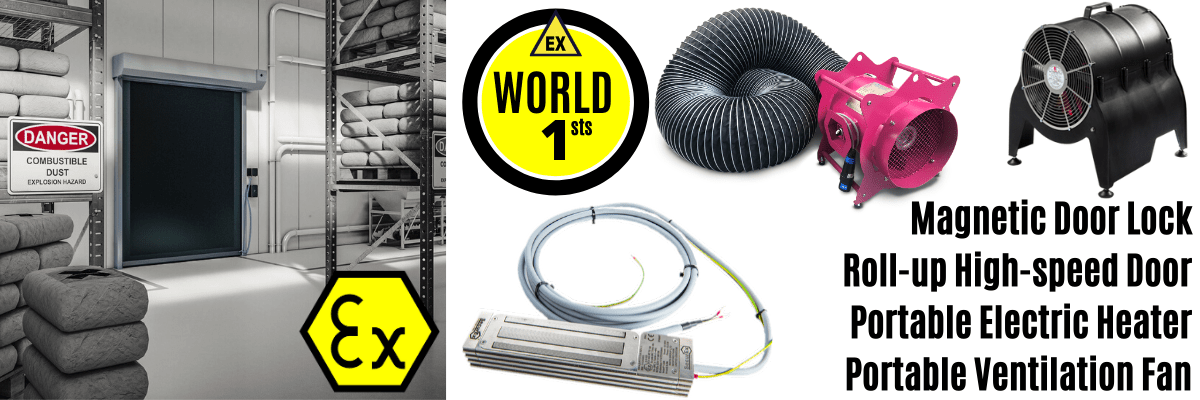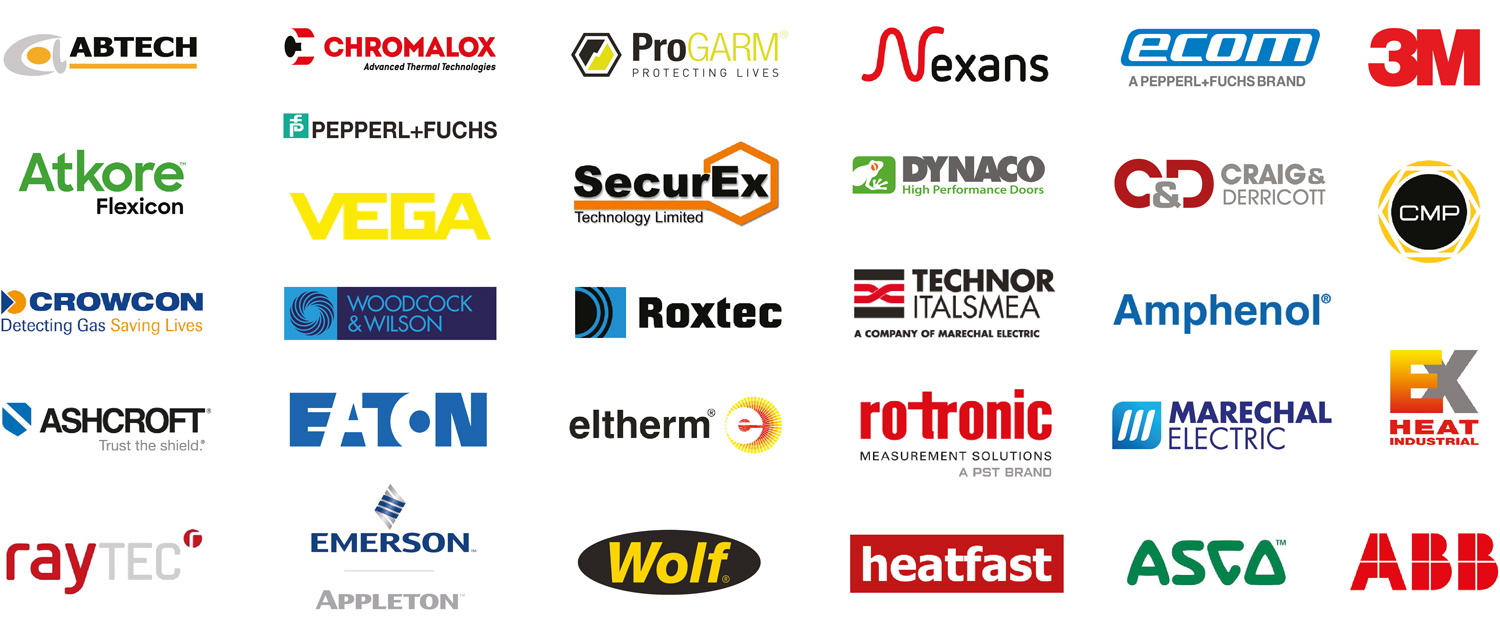Combustible Dusts & Explosive Atmospheres | A Guide by OHSA
Published 04 Mar 2021
Combustible Dusts & Explosive Atmospheres
OHSA Guide
Dust-like and powdered substances are either processed or a by-product of the production processes frequently found in the food and beverage industry.
Regardless of whether the dust is intentional or a waste product, a large majority of these dust-like substances are known to pose an ignition source or explosion hazard – making these workplaces hazardous areas.
Eighty percent of process dusts are combustible, and a dust layer thickness of just 1 mm in a closed room can trigger explosions or fire if the dust was to become airborne and ignite.
However, the level of risk awareness within the processing industries for dust explosion hazards is relatively low. Hence the combination of all these risk factors underlines the importance of preventing dust explosions.
COMBUSTIBLE DUSTs
The Occupational Safety & Health Administration or OHSA asks – Does your company or firm process any of these products or materials in powdered form?
If your company processes any of these products or materials, there is potential for a “Combustible Dust” explosion.
Agricultural Dusts
- Alfalfa
- Apple
- Beet root
- Carrageen
- Carrot
- Cocoa bean dust
- Cocoa powder
- Coconut shell dust
- Coffee dust
- Corn meal
- Cornstarch
- Cotton
- Cottonseed
- Garlic powder
- Gluten
- Grass dust
- Green coffee
- Hops (malted)
- Lemon peel dust
- Lemon pulp
- Linseed
- Locust bean gum
- Malt
- Oat flour
- Oat grain dust
- Olive pellets
- Onion powder
- Parsley (dehydrated)
- Peach
- Peanut meal and skins
- Peat
- Potato
- Potato flour
- Potato starch
- Raw yucca seed dust
- Rice dust
- Rice flour
- Rice starch
- Rye flour
- Semolina
- Soybean dust
- Spice dust
- Spice powder
- Sugar (10x)
- Sunflower
- Sunflower seed dust
- Tea
- Tobacco blend
- Tomato
- Walnut dust
- Wheat flour
- Wheat grain dust
- Wheat starch
- Xanthan gum
Agricultural Products
- Egg white
- Milk, powdered
- Milk, nonfat, dry
- Soy flour
- Starch, corn
- Starch, rice
- Starch, wheat
- Sugar
- Sugar, milk
- Sugar, beet
- Tapioca
- Whey
- Wood flour
Carbonaceous Dusts
- Charcoal, activated
- Charcoal, wood
- Coal, bituminous
- Coke, petroleum
- Lampblack
- Lignite
- Peat, 22%H20
- Soot, pine
- Cellulose
- Cellulose pulp
- Cork
- Corn
Plastic Dusts
- (poly) Acrylamide
- (poly) Acrylonitrile
- (poly) Ethylene (low-pressure process)
- Epoxy resin
- Melamine resin
- Melamine, moulded (phenol-cellulose)
- Melamine, moulded (wood flour and mineral filled phenolformaldehyde)
- (poly) Methyl acrylate
- (poly) Methyl acrylate, emulsion polymer
- Phenolic resin
- (poly) Propylene
- Terpene-phenol resin
- Urea-formaldehyde/cellulose, moulded
- (poly) Vinyl acetate/ethylene copolymer
- (poly) Vinyl alcohol
- (poly) Vinyl butyral
- (poly) Vinyl chloride/ethylene/vinyl acetylene suspension copolymer
- (poly) Vinyl chloride/vinyl acetylene emulsion copolymer
Chemical Dusts
- Adipic acid
- Anthraquinone
- Ascorbic acid
- Calcium acetate
- Calcium stearate
- Carboxy-methylcellulose
- Dextrin
- Lactose
- Lead stearate
- Methyl-cellulose
- Paraformaldehyde
- Sodium ascorbate
- Sodium stearate
- Sulphur
Metal Dusts
- Aluminium
- Bronze
- Iron carbonyl
- Magnesium
- Zinc
Dust Control Measures
The dust-containing systems (ducts and dust collectors) are designed in a manner (i.e., no leaking) that fugitive dusts are not allowed to accumulate in the work area.
The facility has a housekeeping program with regular cleaning frequencies established for floors and horizontal surfaces, such as ducts, pipes, hoods, ledges, and beams, to minimize dust accumulations within operating areas of the facility.
The working surfaces are designed in a manner to minimise dust accumulation and facilitate cleaning.
Ignition Control Measures
Electrically-powered cleaning devices such as vacuum cleaners, and electrical equipment are approved for the hazard classification for Class II locations.
The facility has an ignition control program, such as grounding and bonding and other methods, for dissipating any electrostatic charge that could be generated while transporting the dust through the ductwork.
The facility has a Hot Work permit program.
Areas where smoking is prohibited are posted with “No Smoking” signs.
Duct systems, dust collectors, and dust-producing machinery are bonded and grounded to minimise accumulation of static electrical charge.
The facility selects and uses industrial trucks that are approved for the combustible dust locations.
Prevention Measures
The facility has separator devices to remove foreign materials capable of igniting combustible dusts.
MSDSs for the chemicals which could become combustible dust under normal operations are available to employees.
Employees are trained on the explosion hazards of combustible dusts.
Protection Measures
The facility has an emergency action plan.
Dust collectors are not located inside of buildings. (Some exceptions) Rooms, buildings, or other enclosures (dust collectors) have explosion relief venting distributed over the exterior wall of buildings and enclosures.
Explosion venting is directed to a safe location away from employees.
The facility has isolation devices to prevent deflagration propagation between pieces of equipment connected by ductwork.
The dust collector systems have spark detection and explosion/deflagration suppression systems.
Emergency exit routes are maintained properly.
About OSHA

With the Occupational Safety and Health Act of 1970, Congress created the Occupational Safety and Health Administration (OSHA) to ensure safe and healthful working conditions for working men and women by setting and enforcing standards and by providing training, outreach, education and assistance.

EXPERTS IN EQUIPMENT FOR EXPLOSIVE ATMOSPHERES
Zone 1/2 Gas & Zone 21/22 Dust
Thorne & Derrick are leaders in the development and distribution of Product Innovations that deliver significant improvements to clients plant, people and operational safety in the explosive atmosphere industries.
Your proactive problem solvers experienced in succession planning for the replacement of obsolete, non-conformant and legacy equipment in hazardous areas.
Your first-choice provider of innovative and competitive solutions to ensure ATEX & IECEx Compliance for Hazardous Area Electrical, Heating, Lighting & Process Instrumentation Equipment to UK and international projects.
Control Panels | Plugs | Isolators | Enclosures & Junction Boxes | Lighting | Control Stations | Motor Starters | Heat Trace | Gas Detection | Flame Detection | Process Instrumentation | Process Heating | Ventilation Fans | Security Access Control

Competitive Prices | Extensive Stocks | Technical Support | Express Delivery



